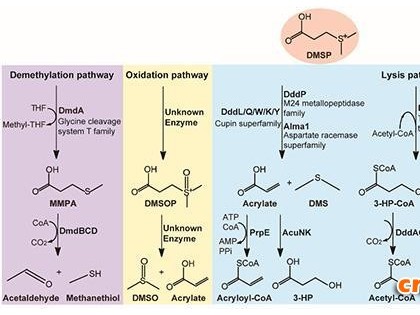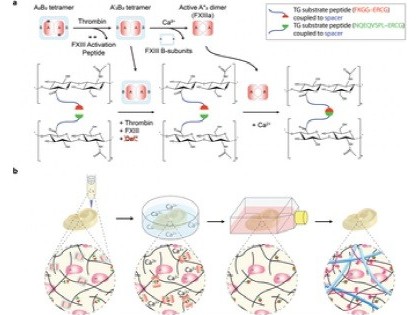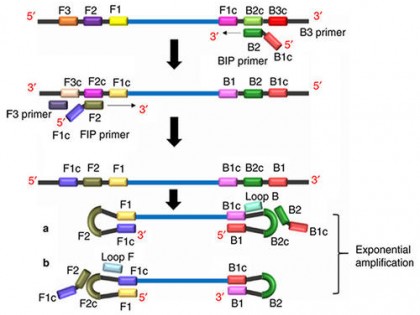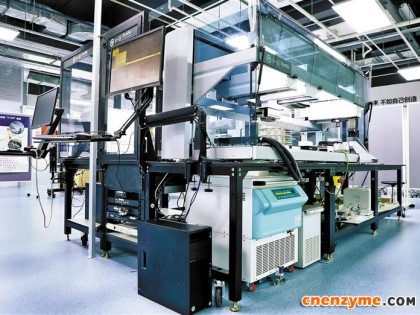DOI:10.1038/srep21920 中国科研用户发表 作者:汤亚杰
2016年2月23日,国际学术权威刊物自然出版集团旗下子刊《Scientific Reports》在线发表湖北工业大学汤亚杰课题组发表的关于脱巯基酶研究进展文章。汤亚杰课题组贾开志副教授为论文第一作者,汤亚杰研究员为论文通讯作者。
甲硫氨酸是影响微生物细胞生长代谢的关键氨基酸之一,甲硫氨酸首先在氨基转移酶的作用下生成4-甲硫基二氧丁酸,进而在脱巯基酶的作用下进一步降解生成甲基硫醇,这一降解过程被科学家们所共识。但是,尚有两个关键科学问题由于缺乏可靠数据没有得到合理的解释:第一,脱巯基酶发挥作用是在胞内还是在胞外?第二,甲硫氨酸是否可以直接通过脱巯基酶一步降解为甲基硫醇?针对这两个关键科学问题:首先,通过建立4-甲硫基二氧丁酸分析检测方法首次检测到4-甲硫基二氧丁酸主要在胞内积累,而胞外没有积累,进而论证了脱巯基酶降解4-甲硫基二氧丁酸主要发生在胞内。其次,克隆并表达了脱巯基酶基因STR3,体外实验发现STR3不但可以将4-甲硫基二氧丁酸降解为甲基硫醇,而且可以直接利用甲硫氨酸生成甲基硫醇,从而证明了甲硫氨酸可以直接通过脱巯基酶一步降解为甲基硫醇。实验结果证明了脱巯基酶在甲硫氨酸降解过程中发挥着“双重”关键作用,拓展了人们对甲硫氨酸降解途径的认识,为后续进一步研究代谢调控甲硫氨酸提供了科学依据。同时,脱巯基酶有望开发成为酶制剂,用于治疗甲硫氨酸依赖型肿瘤,目前相关研究结果正在申请国际专利(PCT/CN2015/096230)。
原文链接:
原文摘要:
Eukaryote-derived methioninase, catalyzing the one-step degradation of methionine (Met) to methanethiol (MTL), has received much attention for its low immunogenic potential and use as a therapeutic agent against Met-dependent tumors. Although biological and chemical degradation pathways for Met-MTL conversion are proposed, the concrete molecular mechanism for Met-MTL conversion in eukaryotes is still unclear. Previous studies demonstrated that α-keto-methylthiobutyric acid (KMBA), the intermediate for Met-MTL conversion, was located extracellularly and the demethiolase STR3 possessed no activities towards Met, which rule out the possibility of intracellular Met-MTL conversion pathway inside eukaryotes. We report here that degradation of Met resulted in intracellular accumulation of KMBA in Clonostachys rosea. Addition of Met to culture media led to the production of MTL and downregulation of STR3, while incubation of Met with surrogate substrate α-ketoglutaric acid enhanced the synthesis of MTL and triggered the upregulation of STR3. Subsequent biochemical analysis with recombinant STR3 showed that STR3 directly converted both Met and its transamination product KMBA to MTL. These results indicated that STR3 as rate-limiting enzyme degrades Met and KMBA into MTL. Our findings suggest STR3 is a potential target for therapeutic agents against Met-dependent tumors and aging.




